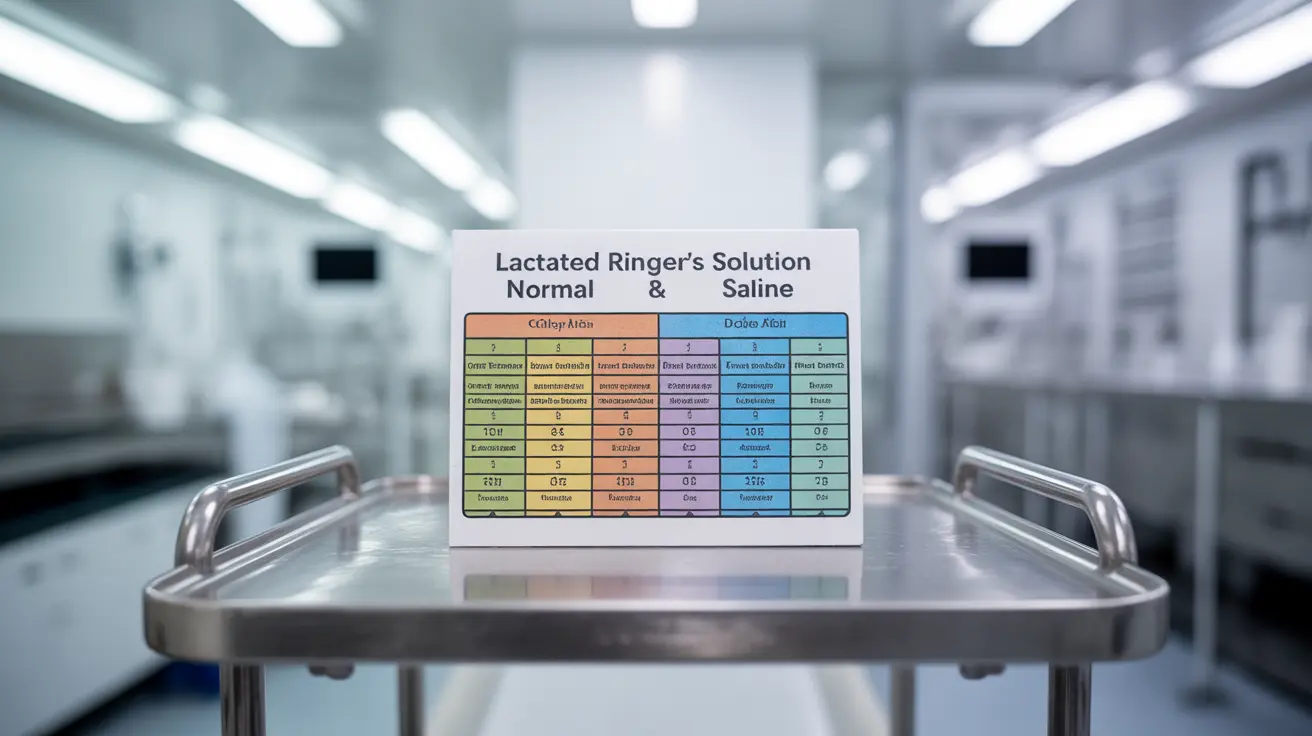Understanding the differences between lactated Ringer's solution and normal saline is crucial for healthcare providers and patients alike. These two intravenous (IV) fluids play vital roles in medical treatment, but each has specific advantages and applications that make them more suitable for different clinical scenarios.
This comprehensive guide explores the key differences between these common IV fluids, their optimal uses, and important safety considerations that healthcare providers must consider when choosing between them.
Understanding the Basics
Lactated Ringer's solution and normal saline are both crystalloid fluids used for intravenous therapy, but their composition and effects on the body differ significantly. Normal saline contains only sodium chloride in water, while lactated Ringer's solution includes additional electrolytes like potassium, calcium, and lactate.
Composition and Physiological Effects
Normal Saline Composition
Normal saline contains 0.9% sodium chloride, making it isotonic with blood. This simple composition has both advantages and limitations:
- Higher sodium and chloride content than human blood
- No additional electrolytes
- pH of approximately 5.5
Lactated Ringer's Composition
Lactated Ringer's solution offers a more balanced electrolyte profile:
- Sodium and chloride in concentrations closer to blood
- Contains potassium and calcium
- Includes lactate, which converts to bicarbonate
- pH closer to human blood
Clinical Applications
When to Use Lactated Ringer's
Lactated Ringer's solution is often preferred in situations such as:
- Trauma and significant blood loss
- Burn injuries
- Diabetic ketoacidosis (after initial management)
- Major surgeries
When to Use Normal Saline
Normal saline remains the fluid of choice for:
- Blood product administration
- Severe metabolic alkalosis
- Hypercalcemia
- Certain medication infusions
Safety Considerations
Both fluids carry potential risks that healthcare providers must consider:
Normal Saline Risks
- Hyperchloremic metabolic acidosis
- Kidney injury risk with large volumes
- Fluid overload
Lactated Ringer's Risks
- Potential calcium-medication interactions
- Considerations for liver dysfunction
- Not suitable for certain electrolyte imbalances
Frequently Asked Questions
What are the main differences between lactated Ringer's and normal saline in IV fluid therapy?
The key differences lie in their composition and physiological effects. Lactated Ringer's contains multiple electrolytes (sodium, potassium, calcium) and lactate, while normal saline contains only sodium chloride. Lactated Ringer's has a more balanced electrolyte profile that closer matches human blood.
When is lactated Ringer's preferred over normal saline for treating patients?
Lactated Ringer's is typically preferred for trauma patients, burn victims, and during major surgeries. It's also beneficial in cases where metabolic acidosis is a concern, as its composition helps maintain acid-base balance better than normal saline.
Why is normal saline recommended for blood transfusions instead of lactated Ringer's?
Normal saline is recommended for blood transfusions because it doesn't contain calcium, which could potentially cause blood products to clot. The calcium in lactated Ringer's solution could interact with citrate anticoagulants in blood products, potentially compromising their safety.
What are the risks and side effects associated with using lactated Ringer's and normal saline?
Normal saline can lead to hyperchloremic metabolic acidosis with large volumes, while lactated Ringer's main risks include potential medication interactions and concerns for patients with liver dysfunction. Both solutions can cause fluid overload if administered inappropriately.
Can lactated Ringer's cause lactic acidosis, and is it safe for people with liver problems?
Lactated Ringer's solution typically doesn't cause lactic acidosis in patients with normal liver function, as the liver efficiently converts lactate to bicarbonate. However, caution is warranted in patients with severe liver dysfunction, where lactate metabolism might be impaired.




